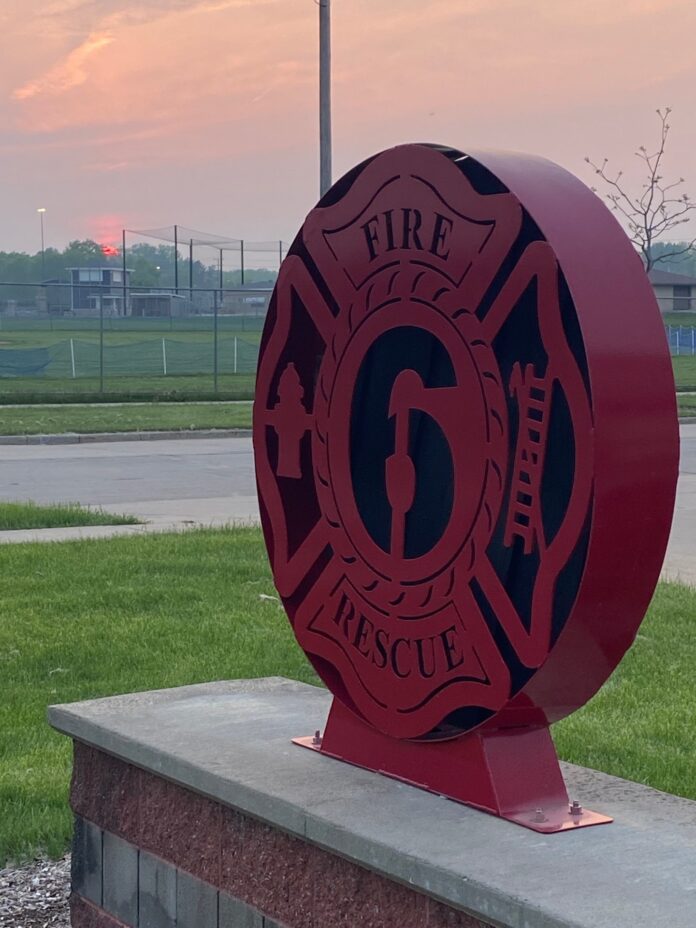Appleton Fire Department
The final session of Appleton’s 2024 Citizens Academy took place on May 9 at Station #6 of the Appleton Fire Department (AFD). Appleton is divided into six fire protection districts, each with its own station. Station #4 is scheduled to be replaced in a better location in the next five to ten years.
Stations are staffed 24/7/365 minimally by 24 of the department’s 96 employees, 84 of whom are fire fighters. Set up for a crew of four, fire engines are generally operated with a crew of three, each assuming specific duties during the response.
Fire fighters:
- work shifts of 48 hours on, 96 hours off;
- have a starting salary of approximately $60,000; the department is currently recruiting three new personnel;
- are not required to live in the city;
- are required to have paramedic certification (all new recruits);
- pay for all of their food while on duty;
- are trained in Emergency Medical Service.
The AFD is proud of the fact that there has never been a gap in coverage by the department. Reponses are dispatched by a central GPS system which assigns the nearest available unit to the response. Surrounding communities are able to provide mutual aid, but it’s rare to have units outside of Appleton called for assistance.
Upon receiving a call, the unit is out the door in under 60 seconds, with an arrival time of less than five minutes within their district. High-loss fires are uncommon, with most fires controlled within 10 minutes of the Fire Department unit’s arrival. Many businesses have fire plans on file to help guide fire fighters upon arrival.
The department currently touts 15 certified paramedic officers. The department has a goal of always having a certified paramedic on duty in every station by 2025. Medical needs comprised 76% of the 6,993 calls responded to in 2023. Appleton partners with Gold Cross Ambulance service, with every trained officer able to provide care until an ambulance arrives.
A few surprises:
- The 48-hour shift is broken up into a 7:30 a.m. – 4:30 p.m. work day, with other nonresponse time including meal planning, physical workouts, hanging out, and often-interrupted sleep time. Meals are planned, money is collected, and the entire crew will hop into the fire engine to do the grocery shopping. Now you know why you see the fire engines at grocery stores so often! To guarantee a fast response, the crew needs to stay together and ready to go.
- The AFD wears many hats: In addition to the EMS knowledge, officers are trained in removal of hazardous material, water rescue, high angle rescue (cats), trench rescue, TEMS (a four-paramedic licensed unit attached to SWAT units), wires down response, building inspections, response investigations, public education, and special event support.
- Nearly all AFD services are free public service, with the exception of intentional false alarms and Gold Cross Ambulance service.
The members of Station #6 shared some of their training experiences by letting us experience the 100 foot, $2 million+ ladder truck, finding one’s way into and around a smoke-filled building, directing the 120psi fire hose pumping 200+ gallons of water per minute and, for the brave among us, donning full gear while performing these tasks.
When asked what they feared most about their jobs, the most common response was responding to loss of life, seeing people injured or dealing with loss, or being injured themselves to be unable to do this job anymore.
Thank you to Fireman Steven Jahr, Public Education Specialist Alex Quintana, and the entire Station #6 crew for patiently walking us through the services provided by the Appleton Fire Department. Please go to the city website at Appleton.gov and check out the Appleton Fire Department 2023 Annual Report for more details.


